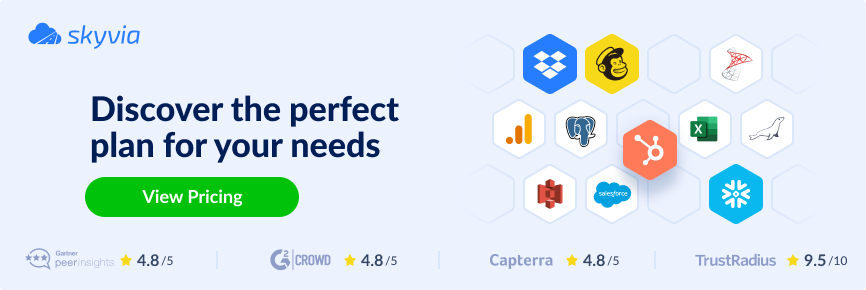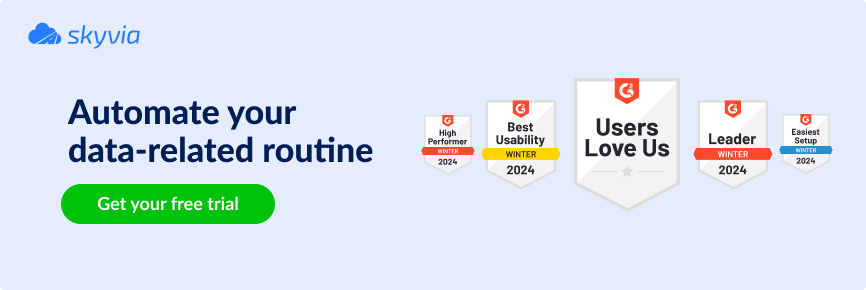If we need to reach another shore, using a bridge is the most reliable and convenient way. The reverse ETL tools are the same bridges between the data warehouses and other applications, like Salesforce, that people use for business operations and predictions.
According to the SeaGate report, only 32% of enterprise data is used because warehouse data doesn’t reach BI tools in time. So, Reverse ETL systems that automatically retrieve real-time data from data repositories and feed them into BI tools help solve this problem.
In this article, we’ll discuss the top 10 Reverse ETL tools for 2025 to help your business grow.
Table of Contents
- What is a Reverse ETL Tool?
- Main Types of Reverse ETL Tools
- 10 Best Reverse ETL Tools
- Factors to Think About When Selecting a Reverse ETL Tool
- Why Skyvia Should Be Your Organization’s Go-To for Reverse ETL Solutions
- Reverse ETL: To Wrap Up
What is a Reverse ETL Tool?
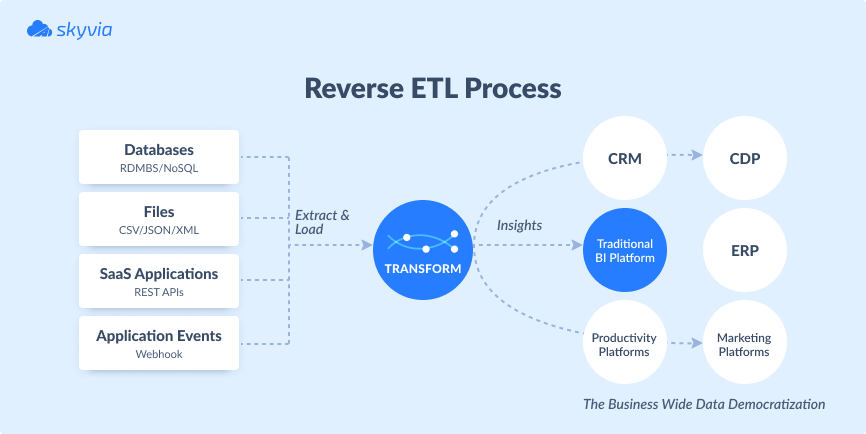
A Reverse ETL tool transfers transformed data from a data warehouse, data lake, or other storage to CRM, marketing automation platforms, analytics dashboards, etc., allowing real-time data activation. It means taking the fresh data that’s constantly being prepared in the data warehouse and immediately using it to update various business applications and tools the company uses.
The main difference between ETL (Extract, Transform, Load) and Reverse ETL tools and processes is the direction of data flow and the focus of their operations. ETL extracts data from multiple sources, transforms it to fit a needed data structure, and loads it into the warehouse for analysis. However, Reverse ETL tools do the same but in the opposite way. This technology takes cleaned and processed data from the data warehouse and ingests it into the companies’ business applications.
Main Types of Reverse ETL Tools
The choice of a reverse ETL tool mostly depends on the specific business needs, existing tech stack, data strategy, and scalability requirements. Such tools can be grouped into five categories based on infrastructure and supporting organization or vendor. Each type of tool comes with its own set of features and trade-offs, such as:
- Costs.
- Ease of use.
- Integration abilities.
- Maintenance requirements.
Here’s an overview of the main types of Reverse ETL tools:
- Cloud-Native Reverse ETL Tools operate in the cloud, handle large data volumes, and are scalable depending on business needs. Cloud-based tools often provide APIs for integrating various SaaS products and work seamlessly with existing cloud data warehouses.
- Open-Source Reverse ETL Tools provide a flexible and cost-effective option for companies willing to set up and maintain them. These tools might require more configuration and manual management but allow extensive customization to fit specific business needs.
- Enterprise Reverse ETL Tools offer advanced features like data governance, security, and full-scale data integration abilities. They suit large companies with complex data environments and strict compliance requirements. Enterprise tools typically provide extensive support and integration capabilities with various data sources and business applications.
- Specialized Reverse ETL Tools are focused on specific use cases or industries, providing tailored functionalities that address particular business processes or sector-specific needs. For instance, tools might specialize in marketing automation, customer relationship management, or financial services, ensuring that the reverse ETL process aligns closely with industry standards and practices.
- Real-Time Reverse ETL Tools focus on real-time data transfer from the data warehouse to operational systems. They are crucial for applications needing instant data updates, like e-commerce or customer service. Real-time reverse ETL tools ensure that the operational systems reflect the most current data.
10 Best Reverse ETL Tools
Now, let’s review the top ten Reverse ETL tools, describing their abilities, pros, and cons, and determining the price of each solution.
Skyvia
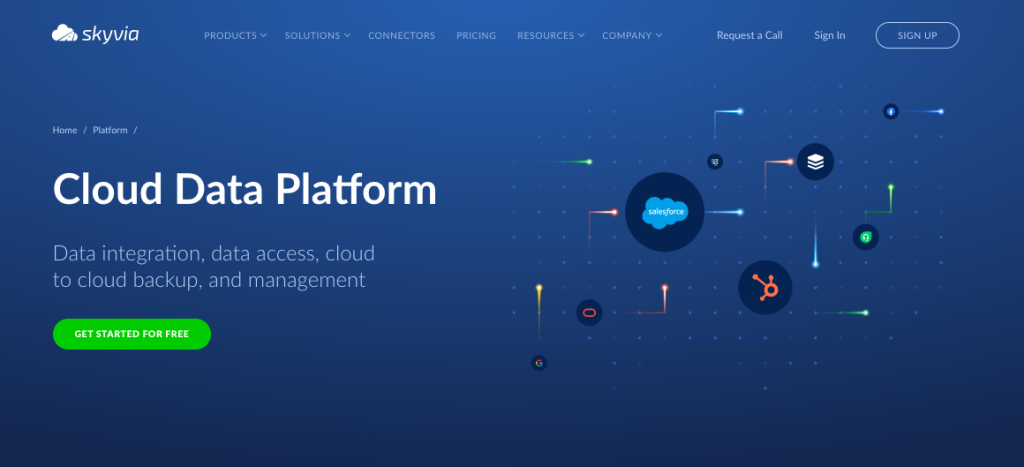
Skyvia is a cloud data platform for data integration, backup, and management. It offers 180+ connectors and a robust reverse ETL capability.
What’s it like? Think of a Swiss Army knife for your data needs. It’s super user-friendly, connecting data sources and destinations with just a few clicks. According to the last G2 rating, the platform is second among the top 10 easiest-to-use ETL tools. Plus, it backs up your data, like having a safety net for your digital assets.
Pros
- User-friendly interface.
- No coding is required for data integration.
- The solution offers data backup features.
- The convenient and flexible schedule allows integration processes to be set according to the user’s needs.
Cons
- Having more video tutorials for customer support would be a great idea.
- The platform provides a wide range of connectors, but having some new ones is always good.
Pricing
Skyvia offers pay-as-you-go prices that start at $15 per month and scale with features and data volume. The paid functionality provides users with the following:
- Maximum execution frequency.
- Scheduled integrations.
- Source and expression lookup mapping and synchronization.
- Data import and splitting, etc.
You may also choose a free plan with basic features.
Census
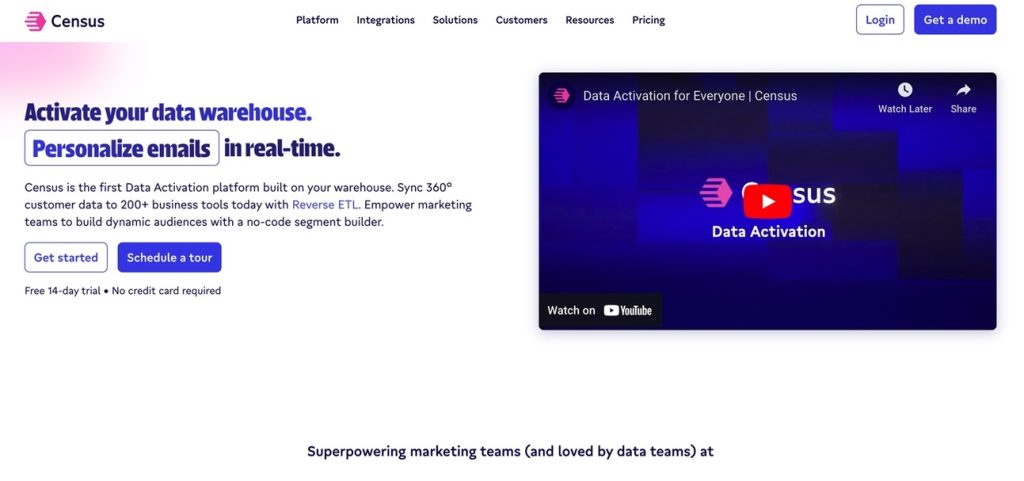
Census syncs data from data warehouses to business apps, making it actionable for operational teams.
What’s it like? Census is like a bridge between your data warehouse and your marketing or sales tools. Imagine having a superpower that automatically updates your customer tools with the latest insights so your teams always have the freshest data at their fingertips.
Pros
- Robust synchronization supports many SaaS applications and ensures data consistency.
Cons
- It can be expensive for smaller businesses to have a complex initial setup.
Pricing
The solution starts with a free trial; paid plans are custom-priced based on usage and features needed.
Hightouch
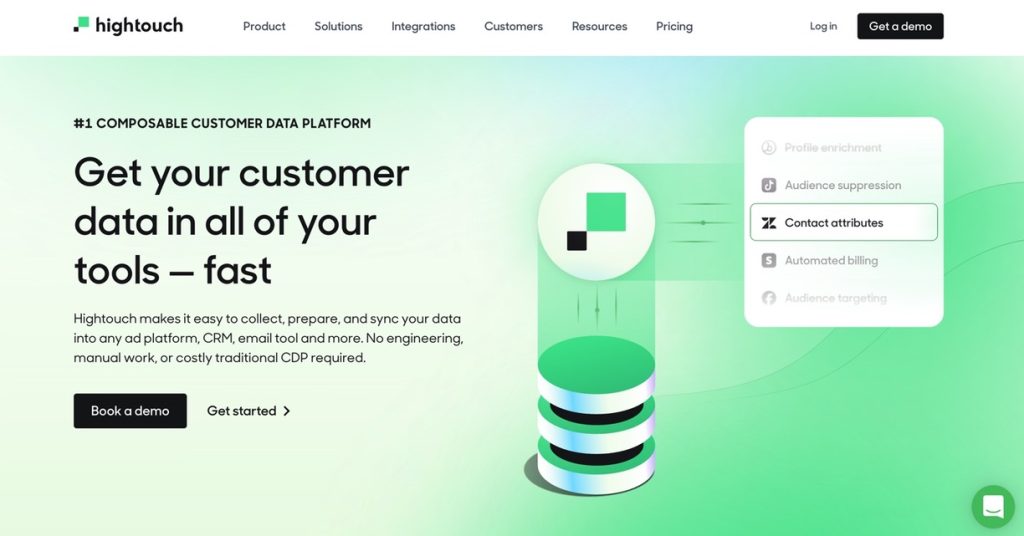
Hightouch is a data integration platform that streams changes from the data warehouse into business apps.
What’s it like? Imajine a delivery service for your data. It takes the latest and greatest info from your warehouse and delivers it straight to your operational apps in real-time. It’s all about ensuring your data doesn’t just sit around — it gets where it needs to go, fast.
Pros
- The platform provides real-time data syncing.
- Broad support for different data warehouses and SaaS apps is available here.
Cons
- Pricing can escalate quickly with increased data volumes and sync frequencies.
Pricing
The solution offers a free version; monthly premium plans start at $150.
Grouparoo
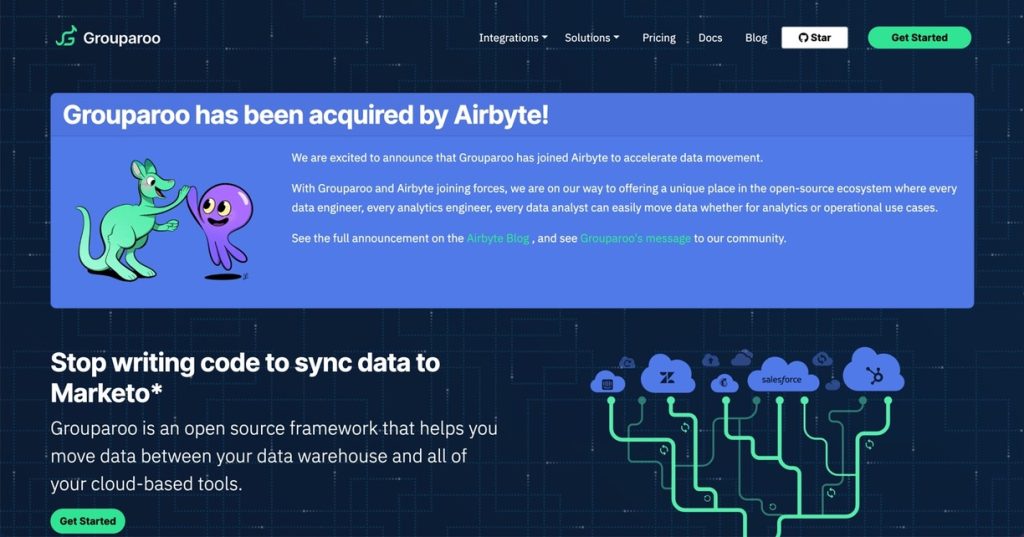
Grouparoo is the open-source reverse ETL tool that simplifies the process of syncing your data warehouse with business tools and services.
What’s it like? It’s open-source, so you can tinker with it, tweak it, and tailor it to exactly what your business needs. It’s perfect for those who love to have their hands on the controls and dive deep into customization.
Pros
- Highly customizable.
- Community-drive.
- The system supports real-time data processing.
Cons
- It requires more technical skills to set up and manage.
Pricing
It’s free to use as it is open-source, with paid support and enterprise features available on request.
Hevo Activate
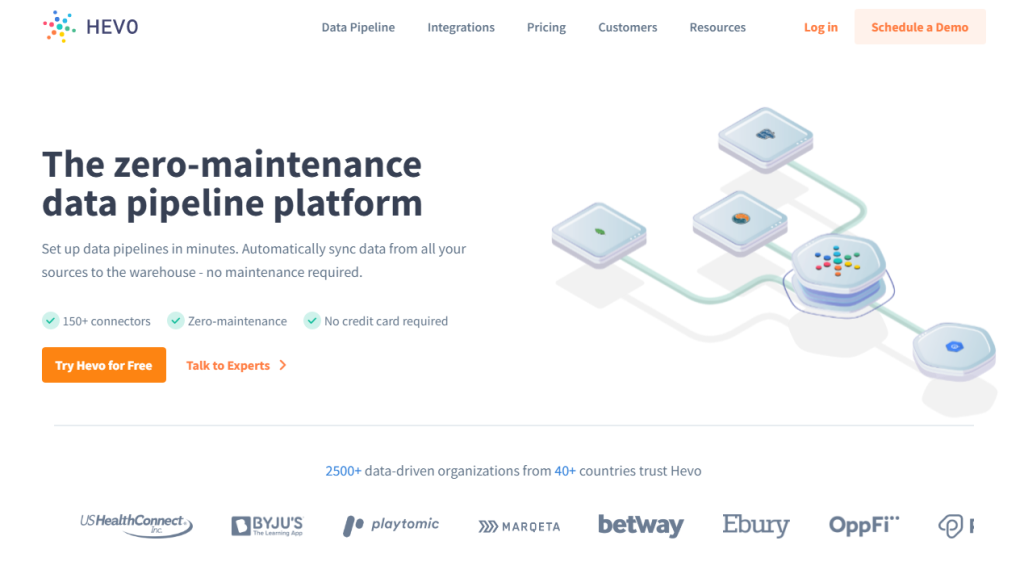
Hevo Activate unifies disparate data sources into actionable insights and operational workflows.
What’s it like? Hevo Activate is like having a smart assistant who takes care of all the tedious work of moving data. It automates the process, ensuring that all your systems are talking to each other without you lifting a finger.
Pros
- Automated data pipelines.
- Pre-built integrations.
- The solution supports an extensive set of sources and destinations.
Cons
- It might be complex to set the system up for non-technical users.
Pricing
Plans start at $249 per month after a free trial.
Stitch
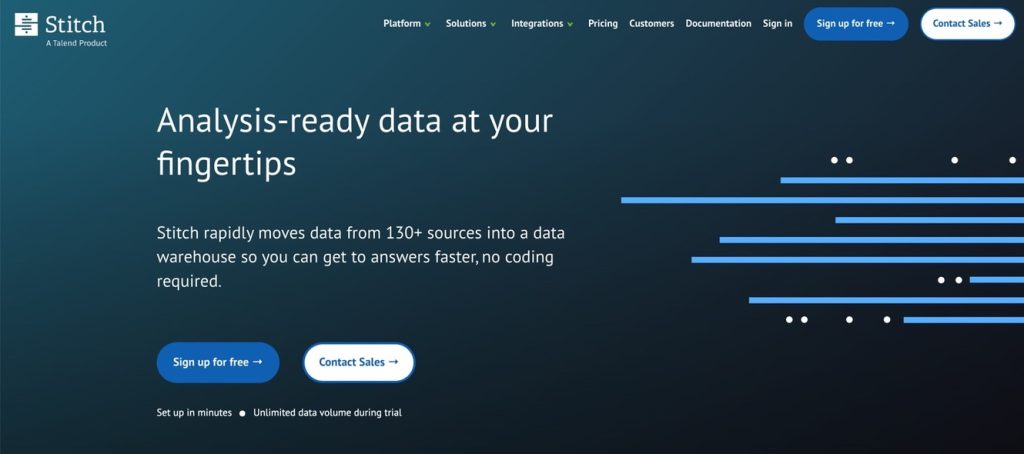
Stitch is a straightforward ETL service that consolidates all your data sources into a single data warehouse.
What’s it like? Stitch is no-nonsense. If you want to get your data from point A to point B without any fuss, Stitch is your go-to. It’s like the reliable bus service for your data, getting it where it needs to go on schedule.
Pros
- Easy to use.
- It supports a wide array of data sources.
- It’s a part of the Talend data fabric.
Cons
- Limited in-built data transformation capabilities.
Pricing
Free tier available; standard pricing plans start from $100 per month based on data volume.
Airbyte
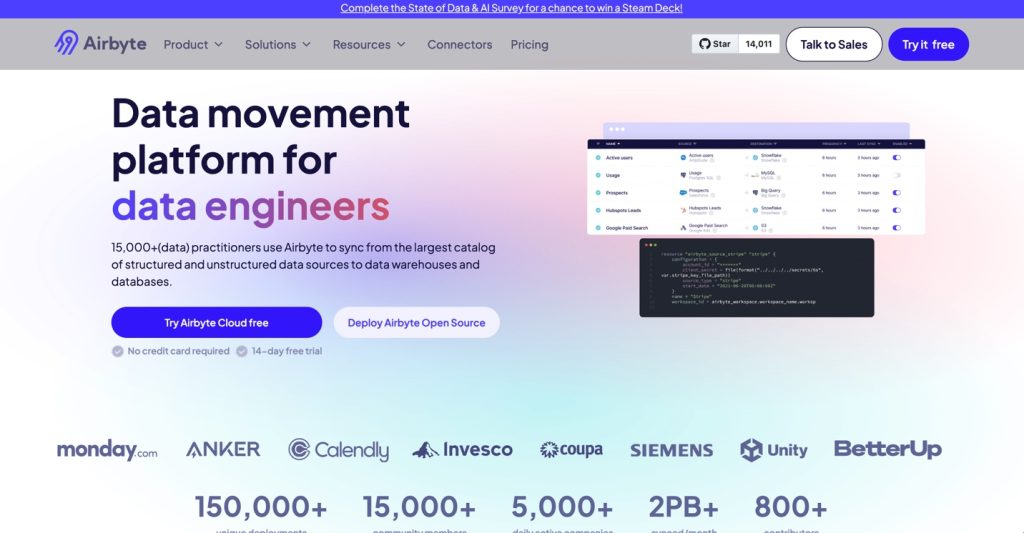
It’s an open-source data integration engine that can handle both batch and real-time data movements.
What’s it like? Airbyte is for adventurers. It’s built to handle any data challenge you can throw at it, from the simplest tasks to the most complex workflows. If you like exploring and creating custom solutions, Airbyte is your map and compass.
Pros
- The platform is highly flexible and customizable.
- It’s community-supported and continuously evolving.
Cons
- It may require more technical overhead to manage and scale.
Pricing
Free if self-hosted; managed services pricing varies based on the scale and support.
Fivetran
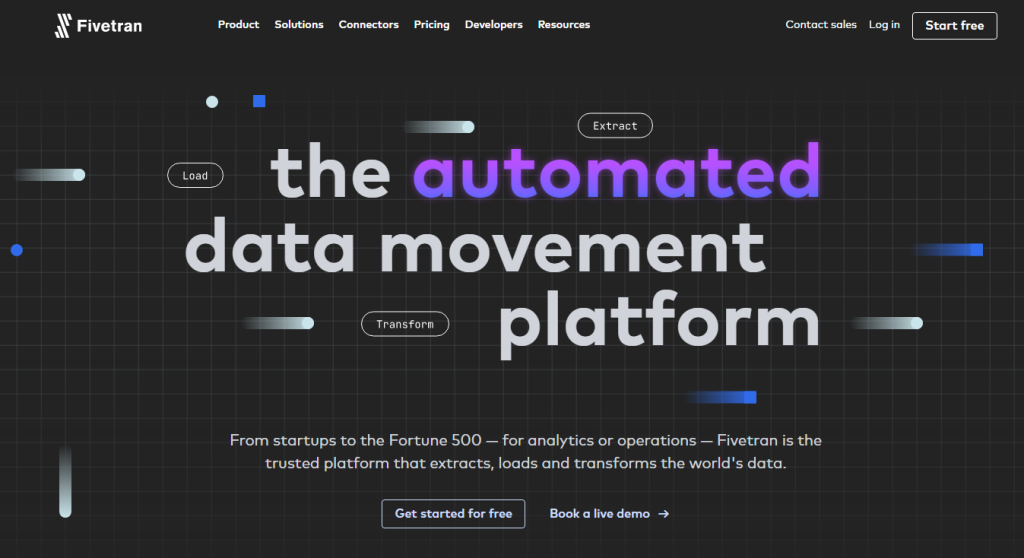
Fivetran provides automated data integration from sources like databases, applications, and event logs into your data warehouse.
What’s it like? It’s a high-speed train for your data, designed to be set up quickly and run in the background, automating the data transfers with high efficiency. The solution is great for those who want to set it and forget it.
Pros
- Strong automation and maintenance.
- High reliability.
- It supports extensive data connectors.
Cons
- The solution can be costly for small to medium-sized businesses.
Pricing
The pricing model is based on data volume and connectors used. Please get in touch with sales for detailed pricing. The free plan is included.
Astera
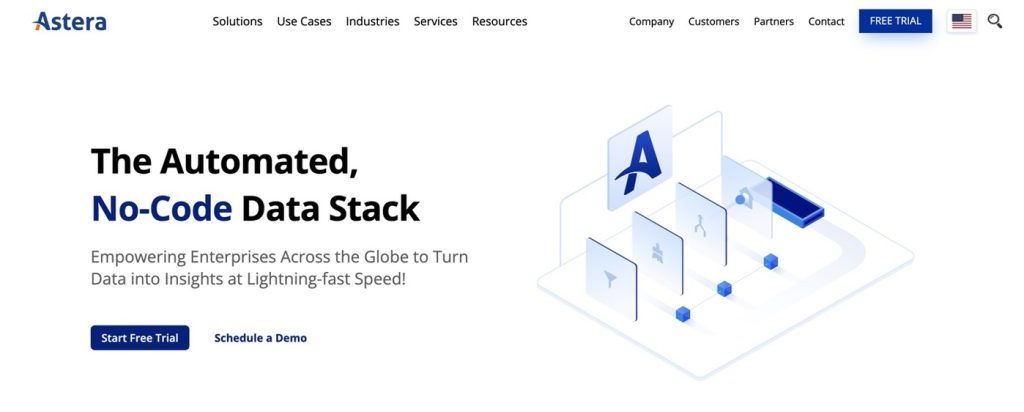
Astera is about simplifying complex data integration tasks with a visual design interface and a focus on data quality.
What’s it like? Astera makes dealing with complex data feel like a breeze. Its visual interface lets you drag and drop elements to create workflows, which is as close as you can see your data move with your eyes.
Pros
- Strong support for data transformation and integration without coding.
- It’s suitable for handling complex data scenarios.
Cons
It isn’t suitable for complex reverse ETL tasks.
Pricing
There is no public pricing. It’s only available on request.
Matillion
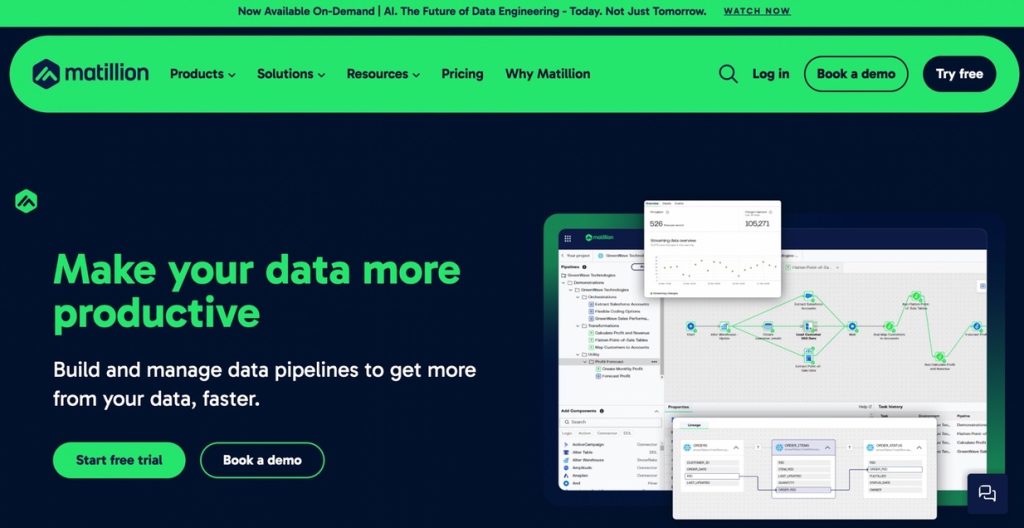
Matillion is explicitly built for cloud data warehouses and offers data transformation and integration abilities.
What’s it like? It’s the powerhouse of data tools. The solution is about handling big, complex jobs with ease. That’s like having a robust and smart giant on the team for a large enterprise with heavy-duty data needs.
Pros
- High-performance.
- Scalability.
- It’s designed for enterprise use with a strong emphasis on security.
Cons
- The platform is primarily suited for large companies.
- High cost for startups and small teams.
Pricing:
The pricing operates on a usage-based credit system, so it’s better to contact sales for pricing. A free trial is also available here.
Factors to Think About When Selecting a Reverse ETL Tool
Choosing a specific reverse ETL tool depends on business needs, budget, technical requirements, features, etc. It’s not only about lifestyle and complications. It’s more about whether the tool fixes the problems, how fast it fixes them, and how much it would cost the company. Here’s how to make a wise choice:
- Tech Stack Compatibility. Make sure the tool plays nicely with what you already have. It’s like getting a phone charger that fits the phone model. The reverse ETL tool has to connect easily with the existing data warehouse, databases, and the company’s SaaS apps.
- Ease of Use. No one wants to spend weeks learning how to use the tool. Look for something as easy as your favorite app. A good user interface and straightforward setup can save a lot of headaches and eye rolls.
- Feature Set. Think about what people need the tool to do. It’s like picking a phone with a great camera if you love photography. Does the tool support real-time data syncing? Can it handle the necessary data transformations? Make the must-have list.
- Scalability. Choose a tool that can grow with the business. Just like you might opt for more storage on a new phone if you take a lot of photos or download tons of apps, the reverse ETL tool should be able to handle increasing amounts of data as the business grows.
- Pricing. Budget is always the key. Nobody would buy the most expensive smartphone without checking if it fits the budget. Look at the pricing models of different tools. Some charge by data volume, others by the number of connectors or updates. Pick one that gives the most bang for the costs spent.
- Security and Compliance. Just like people want a secure phone that protects their data, the reverse ETL tool must be secure and compliant with regulations like GDPR or HIPAA, if applicable. Check what security levels the tool offers.
- Support and Community. Good support can be a lifesaver — it’s like having a warranty for the phone. Check out what kind of support is offered. Is it 24/7? Is there good documentation and a vibrant community around the tool? These can be incredibly helpful when businesses run into issues or want to learn new tricks.
Why Skyvia Should Be Your Organization’s Go-To for Reverse ETL Solutions
Skyvia could be your go-to because it’s not just about doing one thing well. It’s about doing many things well and making them as easy as possible. It’s the tool that works for you, ensuring your data tasks are as painless as possible. This allows you to focus more on the insights your data provides rather than the management of the data itself.
Flexibility and Versatility
Skyvia isn’t just about moving data. You can also use it for backups, creating reports, or managing data across different platforms. It’s all about making data do what you want, how you want.
Intuitive UI
It’s like some favorite shortcuts — intuitive, no complex manuals needed, and you can start using it almost right out of the box, which makes it perfect for teams without heavy technical resources.
Cloud-Based Convenience
Being cloud-based, Skyvia offers the convenience of accessing your data operations from anywhere, just like you’d expect to access your cloud photo album or documents on the go. Plus, you don’t have to worry about installing software or managing infrastructure — it’s all handled in the cloud.
Connectivity
Skyvia supports a wide range of data sources and SaaS applications, from Salesforce to Dropbox, making integrating various aspects of your data ecosystem easy. It’s like universal control for all your apps and data sources.
Affordable Pricing
Skyvia offers a very attractive pricing model. There’s even a free tier, which is great for small businesses or startups just dipping their toes into the world of data integration. The paid plans are competitively priced for larger enterprises and scale with the usage.
Strong Security Measures
With Skyvia, your data’s safety is a top priority. It has robust security protocols, so you don’t have to lose sleep over data breaches or compliance issues. It’s like having a top-notch security system for your digital house.
Responsive Support
Quick and helpful support can make a huge difference, just like good customer service when dealing with a tricky issue.
Skyvia to the rescue
Let’s discover Skyvia’s client’s response to understand how the solution works in real life.
Reverse ETL: To Wrap Up
Choosing the suitable reverse ETL tool is all about finding the right fit for modern businesses’ specific needs and ensuring it’ll help to achieve their data goals without adding extra stress. It’s a tool that should make any company’s life easier, not harder. So, select your one according to the business-specific criteria, but consider the tool’s simplicity, connectivity, security compliance, and the price you’re ready to pay.
